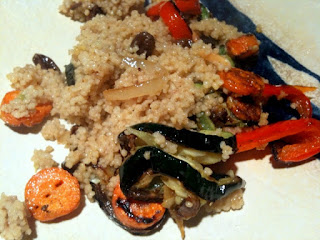I often eat yogurt with lunch or in the afternoon because it keeps me full for a pretty long time, and I love the taste of it. I recently spoke to one of my co-workers about making yogurt at home and she assured me it was rather simple (afterall, I work with bacteria every day) and can save money. So I attempted it at home! Here is how you do it.
Ingredients
-thermometer (a candy thermometer will work here... it just needs to measure up to 180 degrees F)
- milk (of any kind- whole, 1%, soy, etc) - about 3 cups
- Dannon plain yogurt (This is a one-time investment)
- container for finished product
- milk powder to help with consistency
Process
I have tried doing this two ways - I will explain both and tell you the benefits of each.
1. Heat the milk until the temperature reaches at least 180 degrees F. At this temperature, the milk is frothing a little. Make sure you stir it frequently, otherwise you end up with gross clumps.
2. Let the milk cool to 110 degrees F. If you add the plain yogurt before it reaches this temperature you will kill the beneficial bacteria and the yogurt will just be milk.
3. Once the milk has cooled, add 3 Tablespoons or up to 1/4 cup of the plain yogurt. Everyone insists here that you use plain yogurt (I'm not sure why, but I went with it. I might try doing a flavored one just to see what happens). Stir this in the milk and then add the powdered milk. This is an optional step. The reason I decided to add powdered milk is because homemade yogurt has a more liquid consistency and the powdered milk adds thickness. I added about 3 Tablespoons of powdered milk to my yogurt, you can add more or less.
4. Cover the pan and let sit 3-12 hours in a warm place. I preheat the oven to about 200 degrees F and then turn off the oven and place the pan in there. You could place it in a microwave with the door slightly ajar. This step is just to culture the bacteria in the milk. The longer you leave it sitting, the more tart/tangy and thick the yogurt is. The first time I tried this I let it sit for 3 hours. I recommend leaving it for longer (such as overnight).
5. Once the yogurt is done sitting, add in whatever flavors you like. I love vanilla yogurt so I add about a tablespoon of vanilla extract and a little bit of sugar.
6. Then place it in your clean container and let sit in the refrigerator for a couple hours before you eat. the fridge will help the yogurt thicken up a little.
I've been told that it is a good idea to sterilize whatever utensils you use (including the container) by boiling it in water for 10 minutes so that you don't contaminate your lactic acid bacteria with other (different tasting) bacteria. I've also been told that you don't need to do this so its up to you! I don't think it's too much of a problem to just use clean materials rather than sterilizing but that's more my style :)
Make sure you don't devour all the yogurt because you'll need some of it for the next batch of yogurt! This is why it is cheaper to make your own- once you have everything started all you need to buy is milk!
Have fun!
